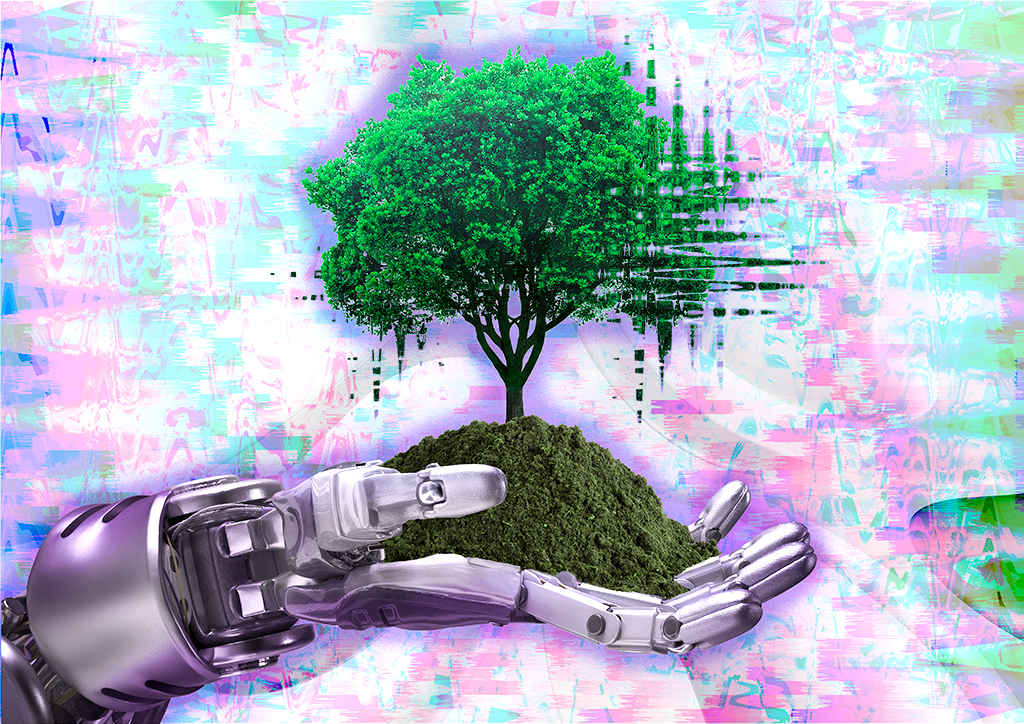Energy usage is on everyone’s lips when it comes to the popularity of artificial intelligence (AI) assistants. These AIs are pushing the energy-intensive data centres that run them into overdrive. Should we be worried about the environment because of this? Will these new AI toys be another man-made innovation that harms the climate?
Everyone is fangirling over new AI assistants that can do amazing things for us. OpenAI’s ChatGPT3 is one example. And there are others.
Tech giants like Google and Microsoft have recently announced major changes to their search engines by integrating AI tools. Also, there are now AIs that can draw pictures and create beautiful artworks for us using merely words as prompts.
But the race to build high-performance AI-powered search engines will undoubtedly require a significant increase in computing power. Could this lead to a massive increase in energy consumption and carbon emissions? Is this something we should worry about as we prompt an AI to draw a picture of a fish on holiday eating ham?
AI and energy use
Training large language models requires a huge amount of computational power, which only big tech companies like Microsoft and Google possess.
Adding AI to the search process will require at least four or five times more computing per search, according to some estimates.
It is thought that training OpenAI’s ChatGPT, which now powers Microsoft’s Bing search engine, consumed 1,287 MWh and led to emissions of more than 550 tons of carbon dioxide. This is the same emissions level as driving a car around Australia’s coastline more than 37 times.
The data companies running these searches have promised to reduce their net contribution to global heating. Microsoft has committed to becoming carbon negative by 2030, while Google have also committed to achieving net-zero emissions at all of their data centres by 2030.
They will have to work it out, because we are all already addicted to our AI friends, and there’s no going back.

Why we might not need to worry about energy usage and AI
Professor Seyedali Mirjalili is a Torrens University researcher and is recognised as one of the world’s best AI experts.
“I think one of the key things that people criticise is the computational resources that we need for AI algorithms. So, obviously, that boils down to energy consumption, because data centres and machines that run those platforms consume a lot of energy.”
But AI can also be used in way that saves energy, says Professor Mirjalili. “AI can be used to predict supply and demand in energy. So, you can optimise engagement with the grid.”
This means that resource consumption can be optimised for far less wastage, thanks to AI.
Professor Mirjalili also says that in an ideal world, the use of data centres will fall away, and computing will be decentralised. That is, unused space on computers in homes, for example, could be used while idle. This is especially effective if the home or office is solar-powered.
“We say the future of AI is decentralisation, and you can get a lot of efficiency from that. In terms of the energy consumption, we don’t need big data centres. We can use houses powered by solar to analyse the data needed for AI systems.”

Energy usage, AI and transport
According to Professor Toby Walsh, the Chief Scientist at the University of New South Wales’ AI Institute, there are many ways that AI is already helping us address the climate emergency. A new area where artificial intelligence has great potential to help cut down carbon emissions is in transport.
“Transportation is responsible for around one-quarter of global carbon emissions. AI can be a great help in reducing these emissions.”
Professor Walsh has worked with several large multinational companies helping them optimise their supply chains and have less effect on climate.
“My algorithms solve what mathematicians call ‘travelling salesperson problems’, finding the best routing for a fleet of trucks. They can routinely cut transport costs for these companies by 10 per cent. The CEOs love that they spend 10 per cent less on transport, as that contributes directly to the bottom line. But that also means 10 per cent less kilometres their trucks drive, and so 10 per cent less fuel and 10 per cent less CO2 that goes up into the atmosphere.”
It seems that our anxiety over the AI age might not have to extend to climate change and the environment. As long as the AI doesn’t become sentient and make slaves of us all, it seems that, for now, we can relax when it comes to having AI in our lives.





